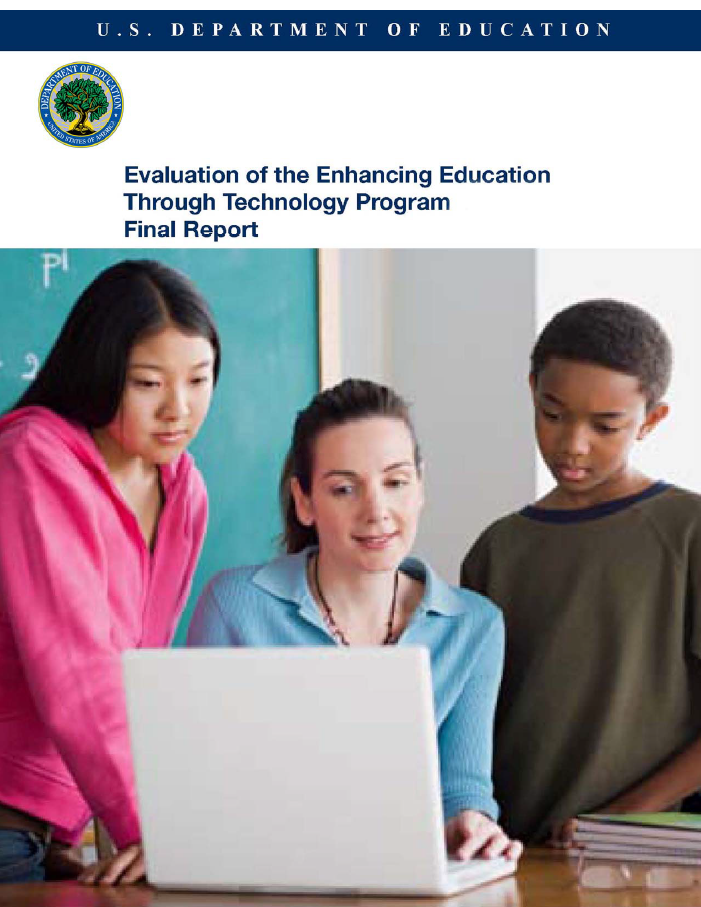Evaluation of the Enhancing Education Through Technology Program : Final Report

Date
2009Author
Bakia, Marianne
Means, Barbara
Gallagher, Larry
Chen, Eva
Jones, Karla
Metadata
Show full item recordAbstract
The purpose of this report is to provide descriptive information about educational technology practices related to the core objectives of the U.S. Department of Education’s Enhancing Education Through Technology (EETT) program. The EETT program is part of the No Child Left Behind Act of 2001 (NCLB) and, like other elements of NCLB, targets “high-need school districts.”1 The authorizing legislation specifically states three goals for the program: (a) to improve student academic achievement through the use of educational technology, (b) to ensure that every student is technologically literate by the eighth grade, and (c) to encourage the effective integration of technology in teacher training and curriculum development to establish research-based instructional methods that can be widely implemented as best practices. From the program’s inception in FY 2002 through FY 2008, approximately $3.4 billion was allocated to EETT. In FY 2008, the program was funded at approximately $267 million. This report is structured around the EETT program objectives and specific performance measures developed by the U.S. Department of Education to meet the requirements of the Government Performance and Results Act (GPRA) of 1993, which are aligned with, but not identical to, the goals stated in the legislation. GPRA requirements address each of the following EETT program priorities: teachers’ and students’ access to technology, technology-related
professional development, technology integration, and student technology literacy. The report uses data collected from nationally representative samples of states, districts and teachers, including: 52 state educational technology directors who were surveyed about school years 2002–03 and 2006–07, 1,028 district technology directors who were surveyed about school years 2003–04 and 2006–07, 4,934 teachers (drawn from the district sample) who were surveyed about school year
2004–05 and 1,515 teachers (also drawn from the district sample) who were surveyed about school year 2006–07.
